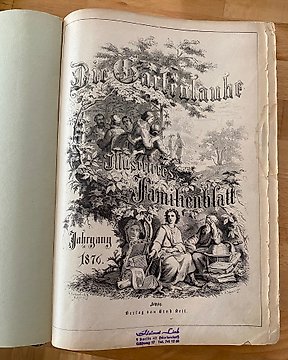
Ernst Keil - Die Gartenlaube 1876 - 1876
Nr. 83782335

Nr. 83782335

"Das Marchen Meines Lebens ohne Dichtung" by H.C. Andersen - Leipzig: Verlag Von Carl B. Lorch - 1848 second German edition - 14cmx12cm - condition: very good, rebound in half leather binding, frontispiece of H.C. Andersen, some page foxing.
The English edition preceded the Danish with 95 years (!), as the first Danish edition did not appear until 1942, when it was issued by H. Topsøe-Jensen under the title "Mit eget Eventyr uden Digtning" (i.e. "My Own Fairy Tale Without Poetry"). The first German edition appeared as an introduction in the collected German edition of Andersen's works, also in 1847, under the title: "Das Märchen meines Lebens ohne Dichtung." The general idea that underlies the work is that life is like a fairy tale and that God makes curious things happen. "This True Story of his Life will not be found the least interesting of his writings" indeed, to me it seems one of the most so. It furnishes the key, as it were to all the rest [.]" (Translator's preface). The autobiography is written in the same wonderful language and with the same straightforward mystique that characterizes H.C. Andersen's other writings, and the person H.C.A. cannot be said to be less interesting or intriguing than his fairy tales. "My life is a lovely story, happy and full of incident. If, when I was a boy, and went forth into the world poor and friendless, a good fairy had met me and said, "Choose now thy own course through life [.]" (the initiating lines of Chapter one). H.C. Andresen wrote his autobiography while travelling in Europe. Numerous interruptions appeared, and Andersen sent the sheets of the manuscript off to the publisher as they were written, which meant that he did not have the earlier parts of the work with him when he wrote the latter. The work also much exceeded the length that he had intended. The manuscript was written in Danish and was translated into English and German the year after he had finished the final sheets (August 1846). For this work he only worked on one single manuscript, and made all of the numerous corrections directly in this, meaning that it was exceedingly difficult to read and that it could not be sent to a translator straight away. The publisher had been told to send the sheets of the manuscript directly to his friend and financial advisor, Edvard Collin, as they arrived, and Collin, realizing that no stranger would be able to read the manuscript, made a fair copy of the entire manuscript, correcting all of Andersen's linguistic and stylistic errors. In return he got to keep the manuscript, which is why it was still in existence almost 100 years later, when the first Danish edition of it was to be printed. Andersen borrowed his manuscript from Collin, when, some years later, he had to deliver a Danish autobiography for the edition of his collected works
So kaufen Sie auf Catawiki
1. Etwas Besonderes entdecken
2. Höchstgebot abgeben
3. Sichere Zahlung durchführen